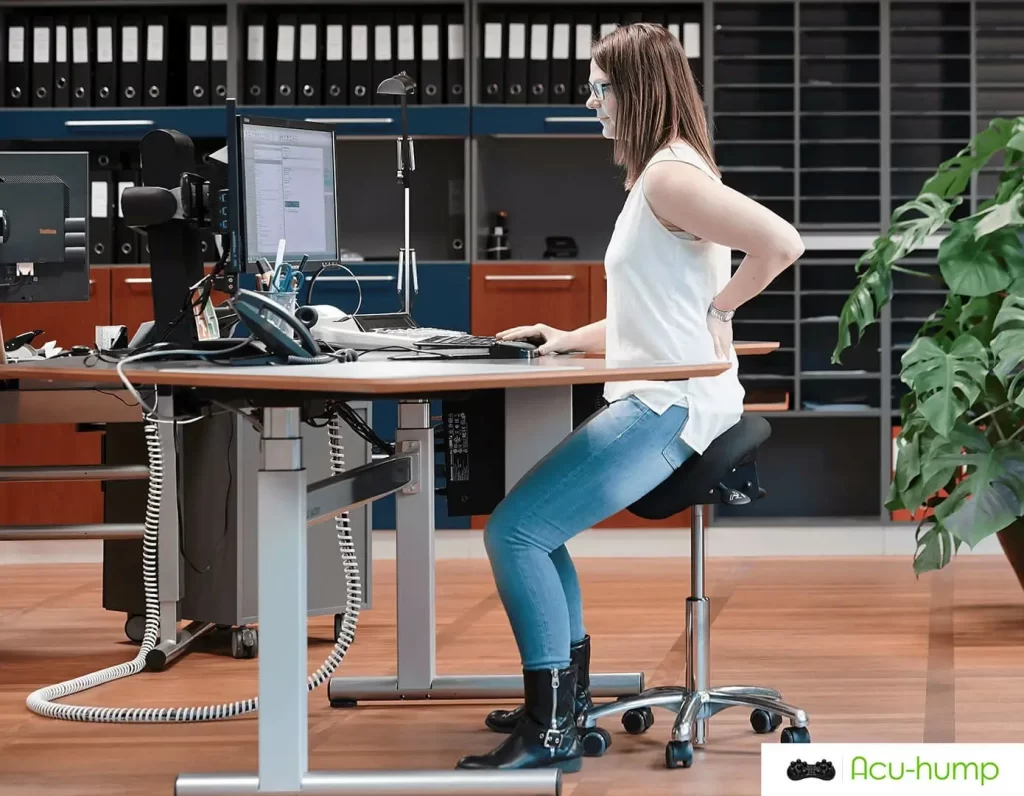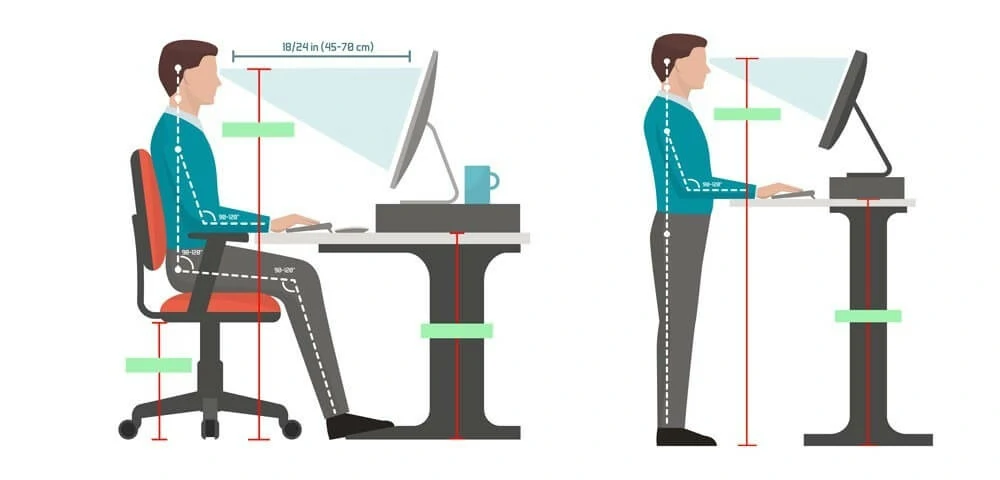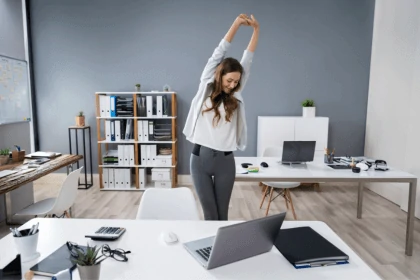If you suffer from piriformis syndrome, then you know how debilitating the pain can be. You may find that even sitting for short periods of time can be aggravating. Fortunately, there are some steps you can take to reduce your pain and discomfort when sitting.
Choose a supportive chair
Investing in an ergonomic chair that is specifically designed to support the lower back can greatly reduce the pressure on the piriformis muscle. Look for chairs that provide adjustable lumbar support and encourage good posture.
When choosing an ergonomic chair, ensure that it fits your body properly. The seat height should be adjustable so that your feet can comfortably rest on the ground, while the backrest should provide support to your lower and mid-back. A chair with adjustable armrests can also assist in maintaining good posture and reducing pressure on the piriformis muscle.
If purchasing a new chair is not an option, consider using a seat cushion or a back support pillow to supplement your current chair. These products are also designed to provide proper support to the lower back to help reduce pain and discomfort.

Stretch regularly
Regular stretching can prevent piriformis syndrome from worsening. Perform piriformis stretches to keep the muscle loose and flexible.
In addition to the above-mentioned tips, using Acu-hump regularly can help release knots in the lower back and hip muscles while sitting. Acu-hump is a self-massage tool designed to provide targeted press to the buttock muscles and can help relieve the discomfort.

To use Acu-hump, simply place it on a chair and sit on it with the massage bumps positioned in the area of your piriformis muscle. You can then rock back and forth over the massage bumps, allowing the pressure to penetrate deep into your muscles and promote relaxation and pain relief.
Using Acu-hump for just a few minutes each day can be incredibly effective in reducing tension and pain in the piriformis muscle. By incorporating Acu-hump into your daily routine, you’ll be able to manage your discomfort and maintain proper posture to avoid exacerbating piriformis syndrome while sitting.

Acu-hump: 30-day return policy.
You have no risk.
Sit with correct posture
Poor posture can worsen piriformis syndrome. When sitting, ensure your feet are flat on the floor and your hips are level. Your shoulders should be relaxed and your back should be straight. Avoid crossing your legs or slouching forward.

Following these tips:
Sit with a neutral spine, avoiding leaning forward or slouching to evenly distribute weight on the spine and pelvis.
Ensure both feet are placed flat on the ground and parallel with the floor.
Use a footstool if necessary to elevate the feet and reduce pressure on the pelvis and legs.
Adjust the chair’s armrests to slightly lift the arms on the shoulders to help relieve pressure on the shoulders and upper back.
Place a rolled-up towel or lumbar support cushion to help maintain the arch in the lower back and prevent slumping forward.
Avoid sitting cross-legged, which may further irritate the piriformis muscle and sciatic nerve.
Reduce driving
Driving can cause piriformis pain due to the prolonged sitting position. Additionally, the leg movements required to use the pedals can aggravate the symptoms in the hips and legs, especially during long drives.

Below are some useful tips to help fixing piriformis pain while driving:
Throughout your drive, place your left foot on the rubber pedal. This position ensures that your legs are symmetrical and your pelvis stays balanced on both sides.
Find the appropriate distance between the seat and pedals to prevent your legs from stretching too much or too little.
Use a heating pad on the affected side while driving. Heat therapy helps soothe the muscle fibers and relaxes the sacral area of the spine, preventing piriformis pain.
Take frequent breaks
Sitting for long periods can put excessive strain on the piriformis muscle. Try to stand for a few minutes, stretch and walk around. Even short breaks can help reduce tension.

Use heat or ice
Applying a heating pad or ice pack to the affected area can help relieve pain and inflammation. You can also try alternating between heat and ice therapy.
Seek professional help
If your condition doesn’t improve with self-care, consider seeking professional help. A physical therapist can help you manage pain and provide guidance on proper sitting position and exercises to prevent future flare-ups.

In conclusion, sitting with piriformis syndrome can be a challenge, but following these tips can help relieve pain and reduce discomfort. Remember, sitting in a chair that provides proper support, maintaining correct posture, taking frequent breaks, using heat or ice therapy, sitting piriformis stretching regularly, and seeking professional help can all aid in your journey towards pain-free sitting.

Acu-hump®
Release Butt & Lower Back
